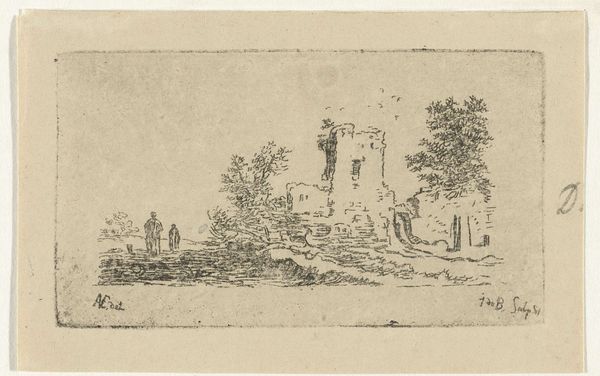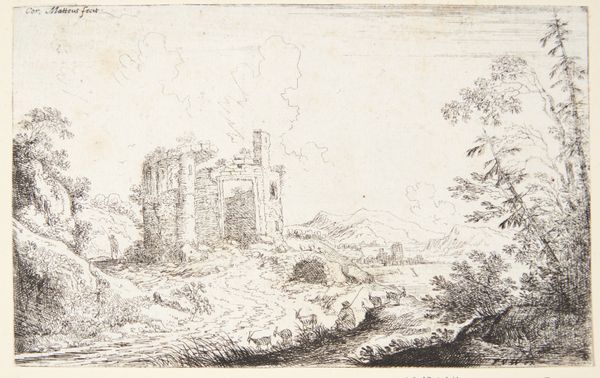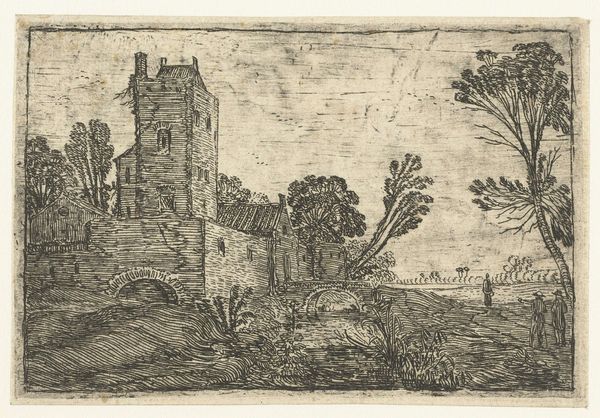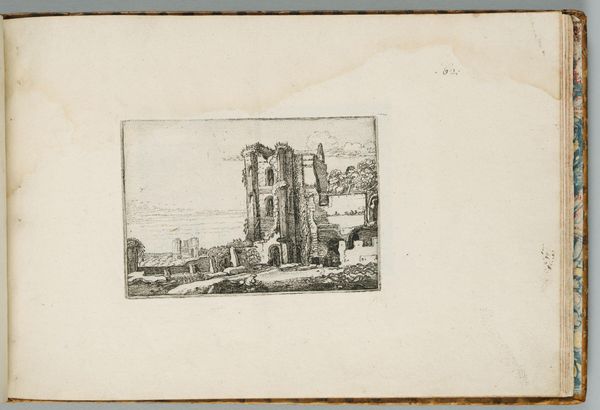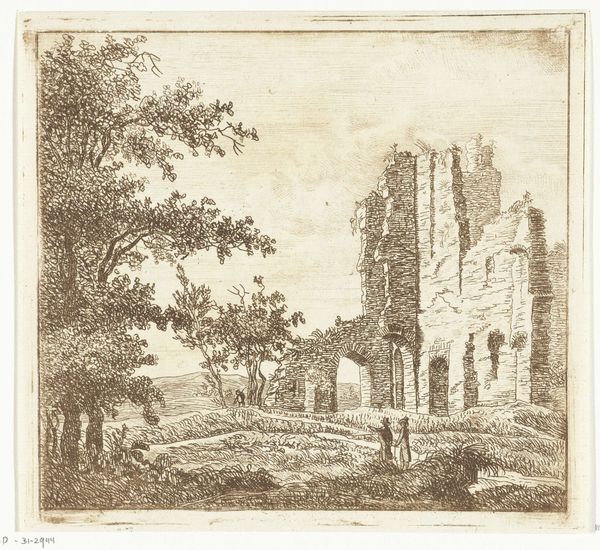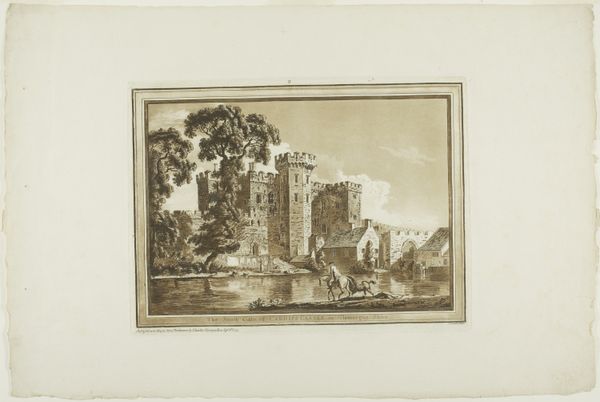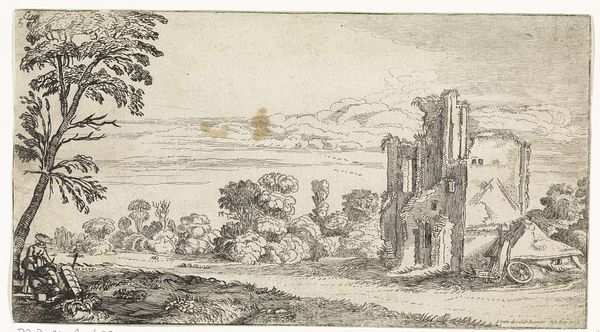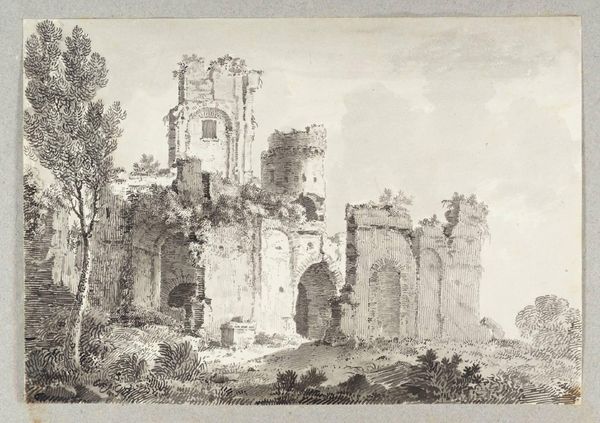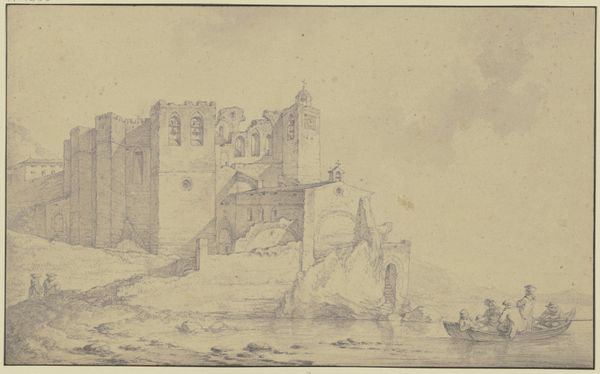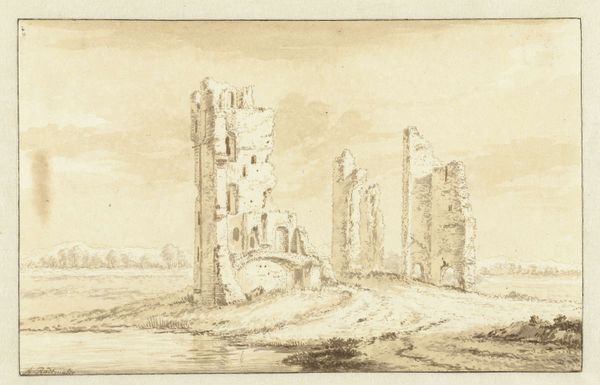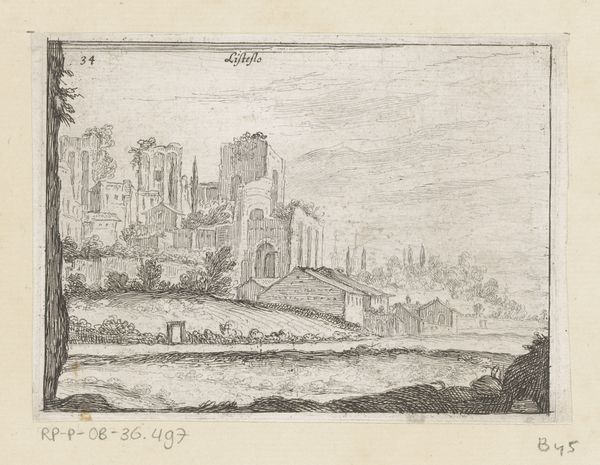
drawing, etching, ink
#
pen and ink
#
drawing
#
dutch-golden-age
#
etching
#
landscape
#
ink
#
history-painting
Dimensions: height 87 mm, width 128 mm
Copyright: Rijks Museum: Open Domain
Editor: This etching, "Ruïne van een toren," by Willem Pietersz. Buytewech, from 1621, it’s a rather stark image of a ruined tower…almost ghostly, really. What layers of meaning do you find embedded in it? Curator: The ruin itself is potent, isn't it? Buildings aren’t just bricks and mortar; they are vessels of meaning, laden with aspirations and narratives of the people who built and occupied them. Buytewech gives us a scene rife with symbolism – not only about the transience of power and human achievement, but perhaps about cultural memory. Does the meticulous detail with which he renders the decay tell us something about the relationship the Dutch had with history? Editor: You mean, is the tower standing in for something else, some other time? I guess ruins are about the past, always. Is it maybe even a warning? Curator: Precisely. The ruined tower isn’t simply a landscape feature, it’s a moral statement, it embodies a reflection on time. Decay serves as a tangible signifier reminding viewers of their own mortality and the ephemerality of earthly glory, an allegorical symbol resonating deeply with viewers of the time, steeped as they were in a society shaped by conflicts and reformations. Note how small the figure near the base is – dwarfed not only by the scale of the ruin, but by the weight of history itself. Editor: I never thought of it that way, but I guess seeing something broken makes you think about what *was*, before it broke. Curator: Indeed. And how that ‘before’ shapes our present understanding. Ruins, then, become less about physical structure and more about the continuous dialogue between past, present and the future. Editor: That adds so much to it! It's not just an old building; it’s a conversation. Curator: Exactly. The piece serves as a poignant memento mori, prompting contemplation on time, change, and the stories etched within the very fabric of our surroundings.
Comments
No comments
Be the first to comment and join the conversation on the ultimate creative platform.
